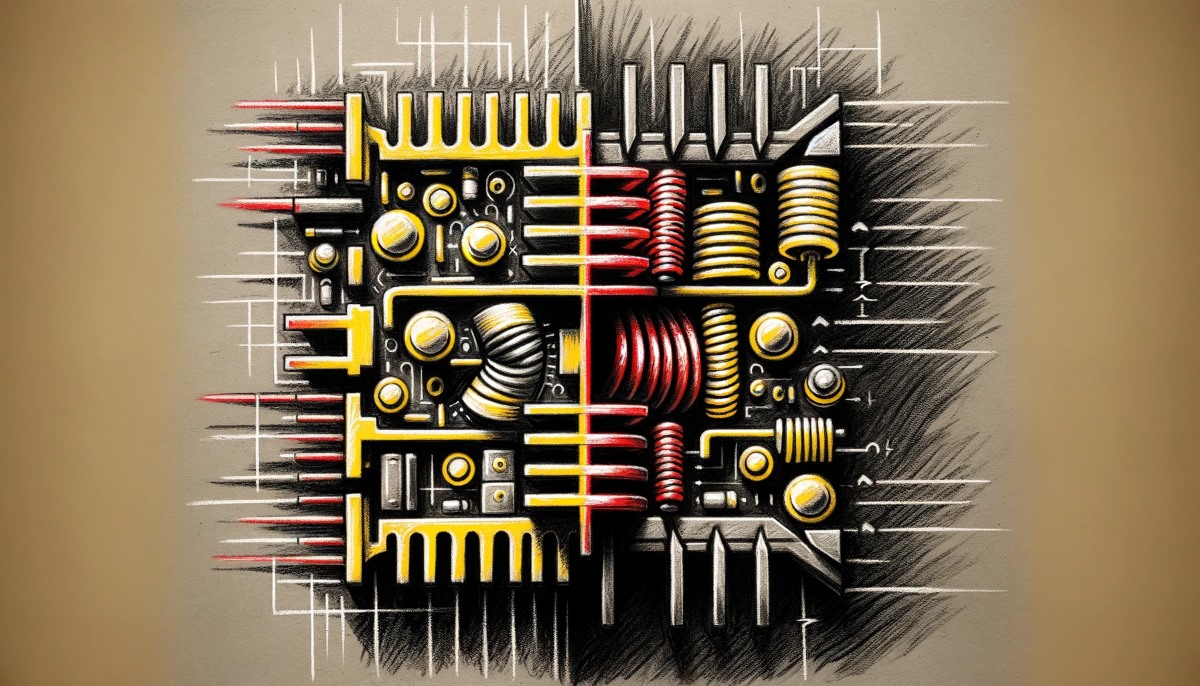Linear vs switching voltage regulators?

Hi everyone,
Linear and switching (electronic) voltage regulators are both used to maintain a stable output voltage, but they operate in different ways and have their own sets of advantages and disadvantages. Here's a quick overview:
Linear Voltage Regulators:
How They Work:
Linear regulators work by using a voltage-controlled resistor in series with the input voltage. The resistance is dynamically adjusted to maintain a constant output voltage.
Advantages:
Simple Circuitry: Easier to design and implement.
Low Noise: Generates less electrical noise, suitable for sensitive applications like RF (Radio Frequency) or precision analog measurements.
Fast Response: Generally faster transient response compared to switching regulators.
No EMI: Doesn't generate electromagnetic interference.
Disadvantages:
Inefficient: They waste the voltage difference between input and output as heat. Therefore, they can get very hot and may require a heat sink.
Size: May require external components like heat sinks, which can make the overall solution bulkier.
Limited Input Range: Usually require the input voltage to be higher than the desired output voltage.
Switching (electronic) Voltage Regulators:
How They Work:
Switching regulators use inductors, capacitors, and switches to convert the input voltage to the desired output voltage. They switch on and off rapidly to maintain the output voltage.
Advantages:
Efficient: Can be 90% efficient or higher, making them suitable for battery-operated devices.
Flexible: Can step-up, step-down, or invert the input voltage, offering more flexibility.
Smaller Size: Often smaller because they don't usually require heat sinks.
Disadvantages:
Complex Circuitry: More complex to design and can require specialized knowledge.
Noise: Can generate electrical and electromagnetic noise (EMI), which may interfere with sensitive components.
Slower Response: Generally slower transient response compared to linear regulators.
Cost:
Switching regulators are generally more expensive than linear regulators.
Choosing between the two depends on your specific needs. If efficiency is crucial, and you can tolerate some noise, a switching regulator is generally a better choice. If you need a low-noise environment and can afford to lose some efficiency, a linear regulator might be preferable.
"The topic of transformers and Voltage regulators is broad in scope, encompassing a diverse range of products. Here are the answers to the most common questions posed by our valued visitors."
- What is a voltage regulator?
- What is the purpose of a voltage regulator?
- Should I use a voltage regulator at home?
- What is the difference between linear and switching voltage regulators?
- How does a voltage regulator work?
- What types of devices use voltage regulators?
- Are voltage regulators safe to use?
- What is the cost of a voltage regulator?
- How do I choose the right voltage regulator?
- Do voltage regulators save energy?
- How do I install a voltage regulator?
- Which brands are more reliable?
- In what industries are voltage regulators used?
- What wattage should a home-use voltage regulator be?
- What's the difference between a voltage regulator and an Uninterruptible Power Supply (UPS)?
- What should I do if my voltage regulator malfunctions?
- How do I recognize problems caused by low or high voltage?
- How is maintenance of voltage regulators performed?
- Are there portable voltage regulators?
- What is the lifespan of a voltage regulator?
+ Voltage regulators Main page
+ Second-hand Voltage regulators
"These questions often include those that many people might have about the component parts of electronic devices. Each user or student will have their own specific questions depending on a particular situation or application. The answers provided are not binding and do not express absolute certainty. You are free to share the article above, citing it as a source. 07/2020."
Your shopping cart is empty!
